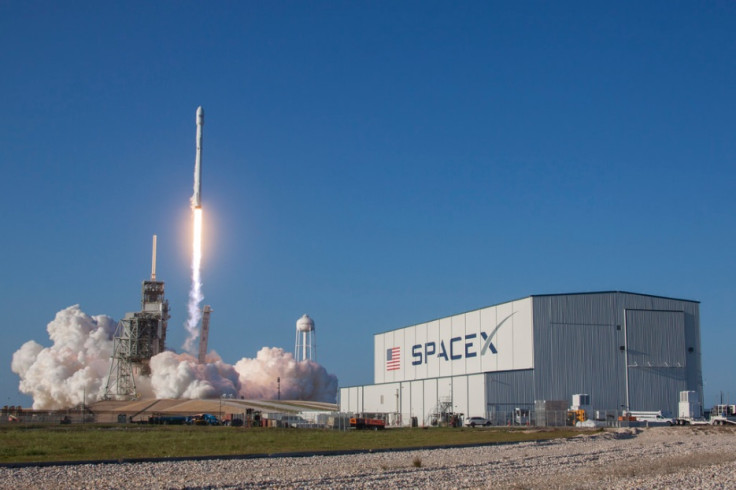Watch SpaceX perform the first test fire of its massive Falcon Heavy rocket
Falcon Heavy development continues ahead of first flight in 2017 and planned trip to Mars in 2020.

SpaceX has taken a major step closer to launching its largest rocket yet, the Falcon Heavy, having tested the spacecraft's main core engine while it is tethered to the ground.
Essentially a larger and more powerful version of the company's Falcon 9 rocket, the Falcon Heavy produces more thrust. It can carry a payload of 140,000 pounds (63,000kg) into lower Earth orbit, and has the potential to take 37,000 pounds to Mars.
Falcon 9, SpaceX's current flagship, can carry just 50,000 pounds into lower Earth orbit. The Heavy's main core is roughly the same as three Falcon 9 cores combined.
SpaceX is headed by Elon Musk, who is also chief executive of electric car company Tesla and heads a tunneling venture called The Boring Company.
SpaceX plans to use Falcon Heavy to fly tourists to the Moon for a lower orbit fly-by as early as 2018, and send the company's first unmanned spacecraft to Mars in 2020.
The first so-called static fire test of Falcon Heavy's centre core was completed at SpaceX's rocket development facility in McGregor, Texas, during the second week of May. A silent video of the test was published to the company's Twitter feed on 9 May.
First static fire test of a Falcon Heavy center core completed at our McGregor, TX rocket development facility last week. pic.twitter.com/tHUHc1QiKG
— SpaceX (@SpaceX) May 9, 2017
As is par for the course with Musk's venture, fans have been left waiting a long time to see Falcon Heavy become a reality. The 45-year-old entrepreneur first said in 2011 that the rocket would fly in 2013, but delays in design and production, and accidents, have pushed the maiden flight back by four years.
SpaceX is currently planning to launch Falcon Heavy at the end of the summer from Launch Pad 39A at Nasa's Kennedy Space Centre in Cape Canaveral, Florida. This is where Apollo 11 took off, taking the first humans to the Moon.
© Copyright IBTimes 2025. All rights reserved.





















